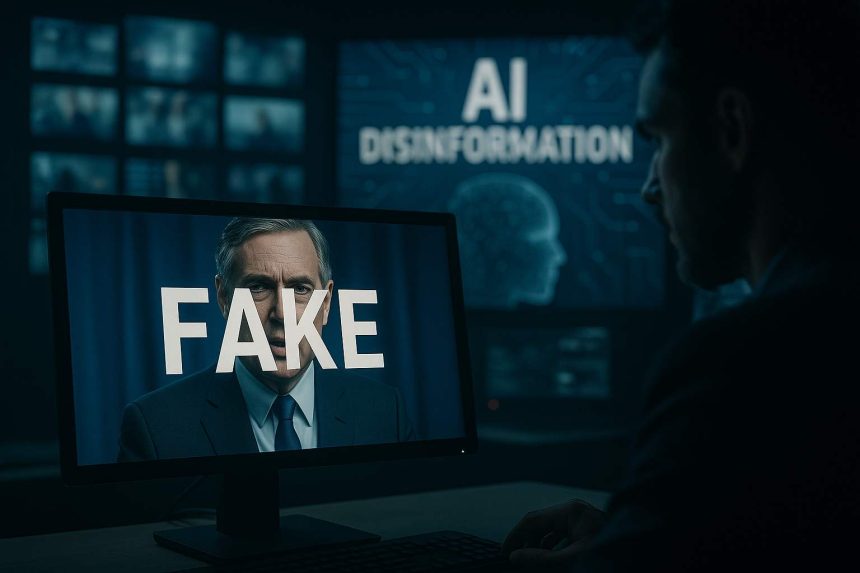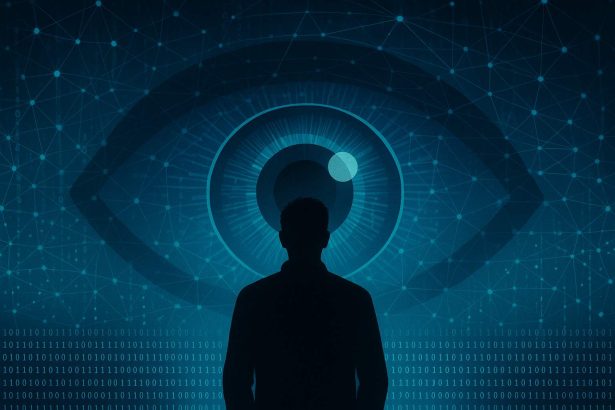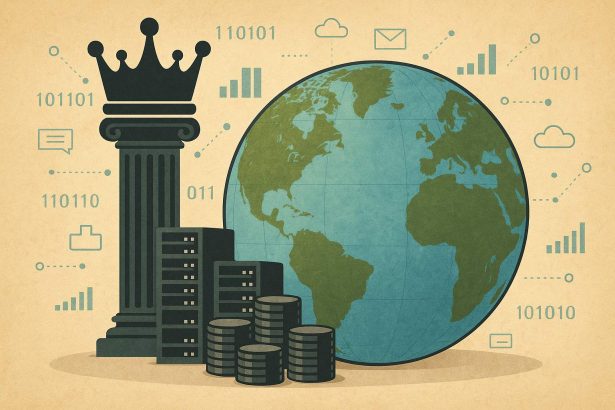From data manipulation to algorithmic deception
The Cambridge Analytica affair showed how psychological profiling and targeted ads could influence elections.
But as technology evolves, the tools of persuasion are no longer just in the hands of advertisers — they’re in the hands of machines.
Artificial intelligence has made it possible to automate disinformation, blurring the line between truth and fabrication.
- From data manipulation to algorithmic deception
- How AI changes the disinformation game
- Deepfakes: the face of modern propaganda
- Social media: amplifying the echo
- The geopolitical dimension
- The danger of synthetic reality
- Can AI fight AI?
- Media literacy: the human firewall
- The regulatory response
- Personal responsibility in the AI era
The same algorithms that recommend movies or products can now generate entire fake news campaigns — complete with fabricated images, videos, and social media posts.
The result is a digital ecosystem where reality competes with synthetic content.
How AI changes the disinformation game
Traditional disinformation campaigns required human effort — writing posts, creating memes, or maintaining fake accounts.
AI has revolutionized this process by automating every step:
- Text generation: Large language models can produce convincing articles, tweets, or comments in seconds.
- Deepfakes: AI-generated videos and voices can imitate real people, making fabricated statements look authentic.
- Image synthesis: Tools like diffusion models create realistic but entirely fictional photos, useful for propaganda or fake identities.
- Bot networks: Automated accounts can post, reply, and engage 24/7, creating the illusion of public consensus.
Together, these technologies form an ecosystem of machine-generated manipulation capable of influencing opinions at scale and speed previously unimaginable.
Deepfakes: the face of modern propaganda
Among all AI tools, deepfakes are perhaps the most dangerous.
By training on thousands of images and videos, neural networks can synthesize realistic footage of people saying or doing things they never did.
Early deepfakes were crude and easily spotted, but today’s versions are nearly indistinguishable from real recordings.
In politics, this raises serious concerns — a fake video of a candidate making an offensive remark could spread faster than fact-checkers can react.
Deepfake detection tools exist, but they are always one step behind.
As generative AI improves, identifying synthetic content will become increasingly difficult.
Social media: amplifying the echo
AI-generated disinformation thrives on social media platforms whose algorithms prioritize engagement.
Outrage, fear, and novelty drive clicks — and the more a post provokes emotion, the more the algorithm amplifies it.
In this feedback loop, truth becomes secondary to virality.
Studies show that false news spreads faster and further than factual information.
When AI enters this system, it doesn’t just spread lies — it manufactures them in bulk, optimized for engagement.
The geopolitical dimension
States and non-state actors have quickly realized the power of AI-generated propaganda.
Automated disinformation campaigns have been linked to elections, protests, and conflicts around the world.
Governments now face a new kind of cyberwarfare: information operations powered by AI.
Instead of hacking infrastructure, adversaries hack perceptions — using bots, fake journalists, and digital avatars to manipulate narratives.
The danger of synthetic reality
The rise of generative AI poses a deeper philosophical problem: when anything can be fabricated, what remains real?
Photos, videos, and even voices — once considered trustworthy evidence — can no longer be taken at face value.
This “epistemic crisis” undermines not only journalism but democracy itself.
If citizens cannot distinguish truth from fiction, collective decision-making becomes impossible.
Can AI fight AI?
Ironically, the same technology used to spread disinformation can also help detect it.
Machine learning models can identify linguistic patterns, visual inconsistencies, and digital fingerprints that reveal manipulation.
Major tech companies are developing authenticity frameworks, embedding invisible watermarks or cryptographic signatures into media content.
These digital “proofs of origin” could help verify whether a video or image is genuine.
However, detection tools must be widely adopted to make a difference — and keeping pace with generative models remains an arms race.
Media literacy: the human firewall
Technology alone cannot solve disinformation.
The most effective defense is media literacy — teaching people how to critically evaluate sources, verify facts, and recognize manipulation techniques.
Schools, journalists, and institutions must promote critical thinking as a civic skill.
Just as we once learned to read and write, we must now learn to interpret and question the digital information that shapes our world.
The regulatory response
Governments are beginning to act. The European Union’s AI Act seeks to regulate high-risk AI systems, including those that generate or spread misinformation.
In the U.S., policymakers are debating transparency requirements and AI labeling for political ads.
Some experts call for a global framework akin to the Geneva Conventions — but for information warfare — setting ethical rules for AI deployment and disinformation control.
Personal responsibility in the AI era
Each user now plays a role in the fight against disinformation.
Before sharing a sensational video or article, ask: Who benefits from this message?
A few seconds of skepticism can prevent falsehoods from reaching thousands.
Tools like reverse image search, AI-generated content detectors, and fact-checking websites can help individuals verify information before amplifying it.
Takeaway: The Cambridge Analytica scandal was the warning; AI-powered disinformation is the sequel.
As technology evolves, the ability to manipulate perception becomes more sophisticated — and defending truth becomes a collective responsibility.
The battle for the future of democracy will be fought not only with laws and algorithms, but with awareness, education, and integrity.







